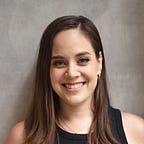Working in conjunction with local councils & wood makers, InUse-ReUse enables local street markets pallets and wood waste to be sent back to suppliers, recycled or converted into beautiful pieces of furniture.
Learn more about what they do by visiting www.inuse-reuse.co.uk
We were approached by them to design an app that would tackle two problems: businesses throughout London do not have an easy way to organise and manage pallet collections, and consumers don’t have enough access to high quality, customisable, upcycled furniture. This would make their current business model faster, easier and more approachable to users.
For this, we would need a team of two UX and two UI people:
Our first point of contact was the brief we received from them, where they explained the general idea of the business and the app we were required to build, and from that we drafted a questionnaire for the interview we would have with Dennis, the mind behind InUse-ReUse, the next day.
After our interview with Dennis, we complemented the brief he had sent us, and got a clearer vision of where this project was headed to:
To win some time, we came up with a survey we would send out to gain some insight about the average person’s shopping and recycling habits; we would let it sit out for a few days to get as much responses as possible, and come back later to use all of that information on our Consumer side.
In order to not lose track of the whole thing, we traced out the process we would have to follow for the app to be done in time:
Our minds were running a million miles per hour, so we immediately jumped into brainstorming session, coming up with the features we thought the app would have, on both Business and Consumer sides.
The Business side was mostly figured out, we just had to translate that into an app, so we did a pretty simple user flow that would allow us to visualise the screens we would need to design.
Parting from that, the UX team gave ourselves 30 minutes to come up with as much ideas as possible for the Business side and sketch them, even if the drawings weren’t so good, we just needed to get the ideas from our brains, all the way to the paper.
We both bounced off each other’s ideas and merged the best features that each of us had, then came up with new screens that we re-drew and tested on users to find out if they were understandable and us on the right track.
After the first user-testing session, we developed new screens from the feedback and started making the wireframes for what would be our Business side, all so we could hand them off to the UI team as soon as possible.
Remember the survey we mentioned a few paragraphs ago? Here’s what we got from it:
This helped us polish the features we had already came up with during our brainstorm, so we did a little exercise so we knew which ones we would prioritise.
And with that, we were ready to put some names and faces to our final users, we created two personas: one to represent the Business side and one for the Consumer side. We also came up with little storyboards to represent the ways in which they would use the app:
We followed the same process for the Consumer’s side in terms of sketching, comparing, testing, iterating, and back to the drawing board, until we had the final wireframes for it, and then handed them off to the UI team.
We knew that even if they had asked us for an MVP (Minimum Viable Product) we had decided to go the extra mile, and we had a lot of work ahead of us, so we tried to hand them the most understandable wireframes we could.
And after only three weeks, the four of us built the following app:
Conclusion
Three weeks is not enough time to build an app and make it reach its full potential, let alone with a project this interesting. But with a vision like this, the right mindset and communication between the team, we can accomplish huge things.
Future features
The app, as it currently stands, only allows feature selection, but it’s build to adapt perfectly if someday InUse-ReUse plans to make 3D View available, also real-time customisation, and the eventual AR so you can place the custom furniture in your home before even deciding to buy it.
